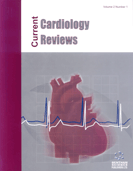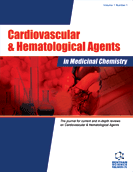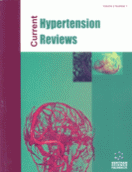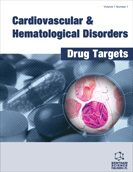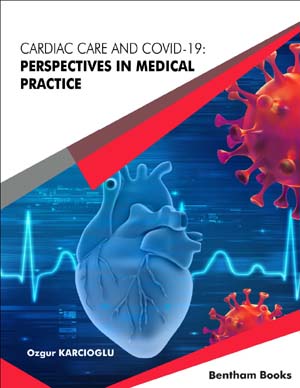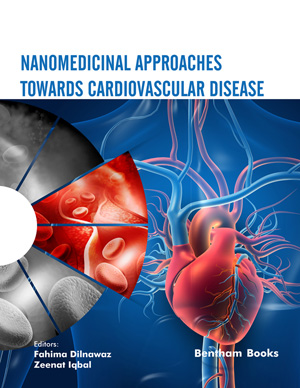Abstract
Andersen - Tawil syndrome (ATS) is an autosomal - dominant or sporadic disorder characterized by ventricular arrhythmias, periodic paralysis, and distinctive facial and skeletal dysmorphism. Mutations in KCNJ2, which encodes the α-subunit of the potassium channel Kir2.1, were identified in patients with ATS. This genotype has been designated as type-1 ATS (ATS1). KCNJ2 mutations are detectable in up to 60 % of patients with ATS. Cardiac manifestations of ATS include frequent premature ventricular contractions (PVC), Q-U interval prolongation, prominent U-waves, and a special type of polymorphic ventricular tachycardia (PMVT) called bidirectional ventricular tachycardia (BiVT). The presence of frequent PVCs at rest are helpful in distinguishing ATS from typical catecholaminergic polymorphic ventricular tachycardia (CPVT). In typical CPVT, rapid PMVT and BiVT usually manifest during or after exercising. Additionally, CPVT or torsade de pointes in LQTS are faster, very symptomatic causing syncope or often deteriorate into VF resulting in sudden cardiac death. PVCs at rest are quite frequent in ATS1 patients, however, in LQTS patients, PVCs and asymptomatic VT are uncommon which also contributes to differentiating them.
The article describes the new electrocardiographic criteria proposed for diagnosis of type-1 Andersen-Tawil syndrome. A differential diagnosis between Andersen-Tawil syndrome, the catecholamine polymorphic ventiruclar tachycardia and long QT syndrome is depicted. Special attention is paid on the repolarization abnormalities, QT interval and the pathologic U wave. In this article, we aim to provide five new electrocardiographic clues for the diagnosis of ATS1.
Keywords: Andersen-Tawil syndrome, QT interval, U-wave, LQTS, CPVT.
Current Cardiology Reviews
Title:Electrocardiogram in Andersen-Tawil Syndrome. New Electrocardiographic Criteria for Diagnosis of Type-1 Andersen-Tawil Syndrome
Volume: 10 Issue: 3
Author(s): Piotr Kukla, Elzbieta K. Biernacka, Adrian Baranchuk, Marek Jastrzebski and Michalina Jagodzinska
Affiliation:
Keywords: Andersen-Tawil syndrome, QT interval, U-wave, LQTS, CPVT.
Abstract: Andersen - Tawil syndrome (ATS) is an autosomal - dominant or sporadic disorder characterized by ventricular arrhythmias, periodic paralysis, and distinctive facial and skeletal dysmorphism. Mutations in KCNJ2, which encodes the α-subunit of the potassium channel Kir2.1, were identified in patients with ATS. This genotype has been designated as type-1 ATS (ATS1). KCNJ2 mutations are detectable in up to 60 % of patients with ATS. Cardiac manifestations of ATS include frequent premature ventricular contractions (PVC), Q-U interval prolongation, prominent U-waves, and a special type of polymorphic ventricular tachycardia (PMVT) called bidirectional ventricular tachycardia (BiVT). The presence of frequent PVCs at rest are helpful in distinguishing ATS from typical catecholaminergic polymorphic ventricular tachycardia (CPVT). In typical CPVT, rapid PMVT and BiVT usually manifest during or after exercising. Additionally, CPVT or torsade de pointes in LQTS are faster, very symptomatic causing syncope or often deteriorate into VF resulting in sudden cardiac death. PVCs at rest are quite frequent in ATS1 patients, however, in LQTS patients, PVCs and asymptomatic VT are uncommon which also contributes to differentiating them.
The article describes the new electrocardiographic criteria proposed for diagnosis of type-1 Andersen-Tawil syndrome. A differential diagnosis between Andersen-Tawil syndrome, the catecholamine polymorphic ventiruclar tachycardia and long QT syndrome is depicted. Special attention is paid on the repolarization abnormalities, QT interval and the pathologic U wave. In this article, we aim to provide five new electrocardiographic clues for the diagnosis of ATS1.
Export Options
About this article
Cite this article as:
Kukla Piotr, Biernacka K. Elzbieta, Baranchuk Adrian, Jastrzebski Marek and Jagodzinska Michalina, Electrocardiogram in Andersen-Tawil Syndrome. New Electrocardiographic Criteria for Diagnosis of Type-1 Andersen-Tawil Syndrome, Current Cardiology Reviews 2014; 10 (3) . https://dx.doi.org/10.2174/1573403X10666140514102528
| DOI https://dx.doi.org/10.2174/1573403X10666140514102528 |
Print ISSN 1573-403X |
| Publisher Name Bentham Science Publisher |
Online ISSN 1875-6557 |
 51
51
- Author Guidelines
- Bentham Author Support Services (BASS)
- Graphical Abstracts
- Fabricating and Stating False Information
- Research Misconduct
- Post Publication Discussions and Corrections
- Publishing Ethics and Rectitude
- Increase Visibility of Your Article
- Archiving Policies
- Peer Review Workflow
- Order Your Article Before Print
- Promote Your Article
- Manuscript Transfer Facility
- Editorial Policies
- Allegations from Whistleblowers
- Announcements
Related Articles
-
Hormonal Effects on Drug Metabolism Through the CYP System: Perspectives on Their Potential Significance in the Era of Pharmacogenomics
Current Drug Targets - Immune, Endocrine & Metabolic Disorders Clinical Assessment of Central Blood Pressure
Current Hypertension Reviews Targeted Therapies in the Treatment of Advanced Renal Cell Carcinoma
Recent Patents on Anti-Cancer Drug Discovery Nenatal Drug Induced Nephrotoxicity : Old and Next Generation Biomarkers for Early Detection and Management of Neonatal Drug-Induced Nephrotoxicity, with Special Emphasis on uNGAL and on Metabolomics
Current Medicinal Chemistry Management of Hypertension-Journey from Single Drug Therapy to Multitargeted Ligand Therapy: A Clinical Overview
Current Clinical Pharmacology Can We Move Forward After ADVANCE?
Vascular Disease Prevention (Discontinued) How Should Serum Uric Acid Concentrations be Interpreted in Patients with Hypertension?
Current Hypertension Reviews The Honolulu-Asia Aging Study: Epidemiologic and Neuropathologic Research on Cognitive Impairment
Current Alzheimer Research Cholinesterase Inhibitors Modulate Autonomic Function in Patients with Alzheimer´s Disease and Mixed Dementia
Current Alzheimer Research Modeling the Effect of Selected Cyclodextrins on Nifedipine Solubility
Current Drug Discovery Technologies Acute Coronary Syndromes: A Role of Immune System
Anti-Inflammatory & Anti-Allergy Agents in Medicinal Chemistry Emerging Synergisms Between Drugs and Physiologically-Patterned Weak Magnetic Fields: Implications for Neuropharmacology and the Human Population in the Twenty-First Century
Current Neuropharmacology Modulation of Vascular Function by Perivascular Adipose Tissue: Sex Differences
Current Pharmaceutical Design Modulators of Vascular Sex Hormone Receptors and their Effects in Estrogen-Deficiency States Associated with Menopause
Recent Patents on Cardiovascular Drug Discovery Method Development & Validation of LCMS/MS for Atorvastatin and Olmesartan in Human Plasma to Trace Drug Interaction of Formulation
Current Pharmaceutical Analysis Nutraceuticals for Metabolic Syndrome Management: From Laboratory to Benchside
Current Vascular Pharmacology The Role of Melanin to Dissociate Oxygen from Water to Treat Retinopathy of Prematurity
Central Nervous System Agents in Medicinal Chemistry Development and Optimization of Controlled Release Bioerodable Anti Infective Ophthalmic Insert
Current Drug Delivery Cardiovascular Disease Risk Among the Poor and Homeless – What We Know So Far
Current Cardiology Reviews Incidence and Risk Factors for Tenofovir-Associated Renal Function Decline Among Thai HIV-Infected Patients with Low-Body Weight
Current HIV Research


